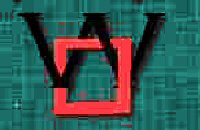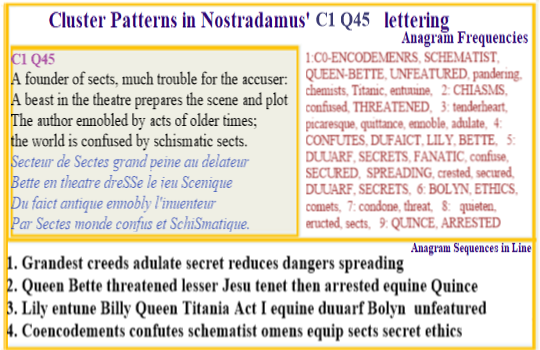 Analyses of all verses
Analyses of all verses
|
 Web Site
Web Site |
 All
Sefirots All
Sefirots |
Nostradamus C01 Q45: Midsummers Nights Dream Anne Boleyn and Queen Bette.
Copyright: Allan Webber, December 2015
This verse has a quite unexpected theme about events in our history and Nostradamus' future since it definitively covers Queen Elizabeth I's intervention in the presentation of Shakespeare' Midsummer's Nights Dream.
It raises the prospect that a member of the troupe of actors incorporated views from a messianic sect.
Although this can be read directly from the text the unequivocal definition is in the anagrams.
 SHAKESPEARE's
DREAM 1596-1597CE
SHAKESPEARE's
DREAM 1596-1597CE
The second and third lines of the above verse hold the clues that this refers to Midsummer' Nights Dream. This particular play of Shakespeare was first presented in the Theatre in Shoreditch in 1596CE (1597 was the year that the Globe was built and first used by Shakespeare).
A most memorable part of the play is when the character Bottom is transformed into a beast with a donkey's head.
The play also contains an internal play to be put on by Quince, Bottom and co. This internal play is presented as being authored by the leader of the troupe, Peter Quince, who draws his tale from a story of love and death in the olden-time classic, Pyramus and Thisbe. All of this fits to what we can read in this verse. But in addition there is the peculiar sound of the second line's Bette in the theatre since it resonates as Elizabeth in the theatre or in the Theatre in Elizabethan times.
Of course my conclusion had other material on which I
could draw besides
the
foregoing
visible
elements of this particular
verse.
The quatrain is full of anagrams that apply to
Shakespeare's play. The name of the author of the olden-time play at the heart
of this play,
Quince, is found in the second line as
ceniqu. There is dwarf (as
duuarf) in the
third line
and Puck,
another major character
in
Shakespeare's
play,
is referred to as a dwarf
in the play
when
Lysander
says
'Get you gone you dwarf'.
The third line also contains Queen Bol'yn (que en - nobly) tying the verse to the monarch Elizabeth via her mother and this is the only place where such an anagram can be found. This line may add more and say 'Queen Boleyn invent dwarf 'which would then imply Queen Elizabeth had input into the play and requested this character be included in secret honor of her mother.
It is also possible that the words faict antique ennobly in the third line were, as shown in many versions, originally written as fait antique ennobly from which we would then have Queen Titania (aitanti queen), the name of the Fairy Queen in Shakespeare's play. And then this title then hints at Queen Bette sharing the dream and concerns of Titania who claims in the first act that nature deserves to be protected from humans.